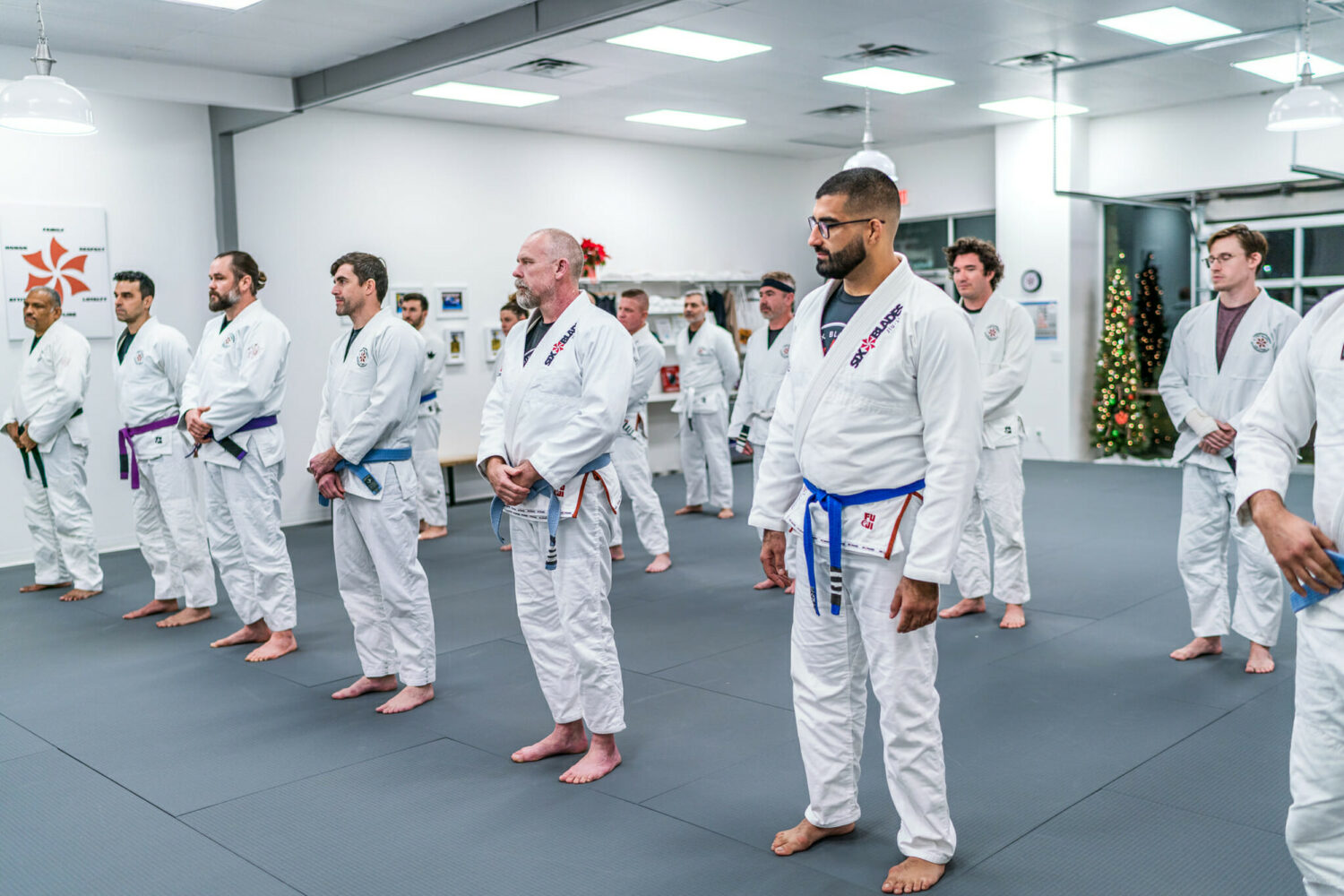BJJ vs Other Martial Arts
Published: November 9, 2023
Categories: Brazilian Jiu Jitsu, Six Blades Jiu Jitsu Downtown Denver, Six Blades Jiu Jitsu North Denver, Six Blades Jiu Jitsu South Denver
Tags:
BJJ vs Other Martial Arts: What are the differences between Brazilian Jiu Jitsu, Judo and Wrestling? Brazilian Jiu Jitsu (BJJ), Judo, and Wrestling are all grappling-based martial arts, but they differ in techniques, rules, objectives, and traditions. Here are some key differences between the three:
-
Origin and History:
- BJJ (Brazilian Jiu-Jitsu): Developed in Brazil, BJJ is a modern martial art that evolved from Judo. It places a strong emphasis on ground fighting and submission techniques.
- Judo: Originating in Japan, Judo is an Olympic sport known for throws and takedowns. It also incorporates ground techniques, but the primary goal is to throw the opponent onto the ground and gain control.
- Wrestling: Wrestling is one of the oldest combat sports, with roots in various cultures around the world. It involves takedowns and control on the ground, with the objective of pinning the opponent’s shoulders to the mat for a certain amount of time or winning by points.
-
Rules and Scoring:
- BJJ: Points are awarded for position and control, with the ultimate goal of securing a submission to win the match. Common techniques include chokes and joint locks.
- Judo: Points are awarded for throws, pins, and submissions. The objective is to throw the opponent onto their back with force and control.
- Wrestling: Points are awarded for takedowns, reversals, and control on the mat. The goal is to pin the opponent’s shoulders or accumulate enough points to win the match.
-
Grips and Uniforms:
- BJJ: Practitioners wear a gi (a traditional uniform) and can use various grips on the gi to control their opponent. No-gi BJJ, without the traditional uniform, is also practiced.
- Judo: The gi is an integral part of Judo, and grip fighting is a significant aspect of the sport. Throws often start from controlled grips on the opponent’s gi.
- Wrestling: Wrestlers wear singlets and do not use the gi. The focus is on controlling the opponent’s body and maintaining physical contact.
-
Stance and Takedowns:
- BJJ: BJJ has a more relaxed and flexible stance, with less emphasis on standing takedowns. It typically begins from a neutral position on the ground.
- Judo: Judo practitioners have a more upright stance and focus on a wide range of throws and takedowns from the feet.
- Wrestling: Wrestlers have a low, crouched stance, with a strong emphasis on explosive takedowns and quick transitions.
-
Ground Work:
- BJJ: BJJ places the most emphasis on ground work, with practitioners spending a significant amount of time rolling and practicing submissions on the mat.
- Judo: While Judo includes ground work, the primary objective is to pin the opponent or submit them quickly after a throw.
- Wrestling: Wrestling combines takedowns with ground control and pins. It emphasizes quick transitions and escapes.
-
Training Focus:
- BJJ: BJJ focuses on positional control and submissions, emphasizing technique, leverage, and strategy over physical strength.
- Judo: Judo emphasizes throws and takedowns, as well as ground control and submissions. It’s known for its balance of power, technique, and timing.
- Wrestling: Wrestling emphasizes physical strength, speed, and agility, with a strong focus on takedowns, control, and pinning.

